The Uncommon Artistry of Scott G. Brooks
Scott G. Brooks, who creates wild, wondrous masterpieces, finds humanity and heart in his new show, "Common People."

“I can’t think of any place else where I’d rather be at this point,” says Scott G. Brooks, summing up the love he feels for his current Mid-Atlantic home base. Originally from Michigan, the LGBTQ artist with an instantly recognizable, distinctive style, has long been associated with Washington, D.C. Among other commissioned projects, over the years he’s served as the contributing illustrator for Metro Weekly, creating numerous covers, including an arresting, whimsical portrait of Alan Cumming and Joel Grey as their respective emcees from the Broadway musical, Cabaret, and several magnificent Fall Arts Preview frontpieces, including last year’s “animated” opera drag bear.
In 2016, after more than 25 years of life in D.C., Brooks set out for a slightly smaller, notably weirder artistic domicile to the north. Seven years later, he’s fully in his element in Baltimore, which has inspired a fertile period in his storied career. As proof, consider his works currently on display at Mount Vernon’s Gallery Blue Door. While the people and scenes depicted in the small, Pride-related exhibition Common People may look very much like those of earlier works by Brooks, all of them were created in the past year and with clear inspiration from Baltimore and its more colorful denizens.
In conversation, Brooks is quick to volunteer the key attractions and attributes that have made Charm City such a riveting place for him. For starters, there’s the promising new developments in his neighborhood of Mount Vernon, otherwise known as the city’s “gayborhood.” But even in far-flung neighborhoods, there is a queer-friendly vibe, he says, plus a rich and varied diversity that rivals D.C.
Brooks also points out the sheer breadth and scope of the arts scene in Maryland’s most populous city. Baltimore is a magnet for both artistic elites — through the prestigious educational institutions the Peabody Institute music conservatory and the equally acclaimed Maryland Institute College of Art, not to mention what Brooks refers to as the “beautiful collection” of the esteemed Walters Art Museum — and also maverick self-taught, do-it-yourself “outsider” artists drawn to the “really weird stuff” at the eccentric, enlightening American Visionary Art Museum.
Adding to Brooks’ love of Baltimore is the love that he has found there with Thomas Sabia — a man, it turns out, who also has an artistic background, and is an even bigger booster of the city. In Sabia’s case, quite literally so: For a decade now, Sabia has owned and operated Mount Vernon’s The Empire House. The Airbnb, as Brooks explains, is “not gay exclusive” and attracts “a mixed crowd” of travelers, yet “the Pride flag’s out front” and “it’s very clear on the profile that it is LGBTQ-run.”
Another plus in Baltimore’s favor for Brooks is the access the Port of Baltimore offers to excursions by sea.
“We just went on a cruise out of Baltimore,” he says. “There were about 17 or 18 of us, people from D.C. and people from Baltimore. We left the Port of Baltimore and went down to the Bahamas.” Although not a gay cruise, Brooks jokes that the handful of gay couples in his group plus other gay passengers they met aboard the vessel “made it pretty gay.” It was also less taxing and costly than it would be to hitch a ride on a Caribbean cruise from South Florida. “It was smaller,” he says, “so it was just an easy trip and inexpensive.”
That could also serve as a summation of Brooks’ move north last decade — and for Baltimore’s standing in relation to D.C. then and now. “It was a really, really easy move for me,” Brooks adds. “It’s not cross-country. It’s an hour away.”

METRO WEEKLY: Let’s start with the current show, Common People. Tell me about it and how it came to be.
SCOTT G. BROOKS: The show is at Gallery Blue Door, which is right here in Mount Vernon, very close to the gayborhood. It’s a relatively new, gay-owned gallery. They’ve been open about four years. They started just before the pandemic. I had a big solo show there last year.
The show last year was all my pandemic-era work. It was the first solo show that I’d had since 2015. But the work was relatively recent — previous two or three years. This year, I was invited to do it for Pride Month. And there are three LGBTQ artists there together.
My solo show is called Common People, and it’s got a variety. But Common People sums up my work in general, I think. I always use models. I always use a lot of friends of mine, or people in the neighborhood, people that I find interesting. Always a lot of bears, a lot of burlesque performers, trans people and drag queens. I called it Common People just because, for you and I, it’s common. We see these people every day, and they’re our neighbors and people we work with, and our friends. So I thought it was an appropriate title.
This is a simpler show. I agreed to do it if I could have a smaller space so it’s not as intense. Because last year was a really big show and very intense. Some of my work can get pretty big and crazy, with a lot of characters. This year, for this show, I stuck with simpler, maybe a little bit more elegant work for the show. But the new stuff, in some ways, is more experimental. A lot of my work gets very complicated and narrative. So I wanted to simplify everything. And so they’re more singular characters for the big paintings as opposed to very complicated narratives.
MW: And are most of the images based on people that live or work in Baltimore or the Baltimore area?
BROOKS: There are two main paintings, and [the model for each is based] in Baltimore. One is a trans man, and then it’s another neighbor. The trans man is Rhapsody in Red and Yellow, and then there’s Sonata in Red and Yellow. They’re a pair, a diptych, and they go together. But they’re not connected. They’re not attached, so they do stand alone. I don’t want to be that guy, so they work separately or together, honestly.
MW: I don’t know if you’ve thought about it this way, but the type of people you’re inspired by in creating your artwork, has that changed at all since your move to Baltimore? There definitely seems to be commonality across your body of work.
BROOKS: Yeah, the community I had in D.C. is not that different than the community I have here. I was probably more in the burlesque scene there as far as friends, and still I have neighbors — my upstairs neighbor is in burlesque, so I’m still part of that — but I’m not as involved with it as I was.
We have a gay figure drawing group that meets every other week. So I get a lot of my models from there. So the models, yeah, they would be similar. My community is still gay — I’m still in the gayborhood. I was in Shaw before and now I’m in Mount Vernon. It’s a different vibe and scale.
Mount Vernon in Baltimore is a little more of a human scale. I know a lot more of my neighbors now and I know a lot more of the shops and the bartenders and the people who work in the neighborhood than I did when I lived in D.C. It’s a little friendlier. It’s smaller, of course, and there’s not as many bars and restaurants available. My partner Tom has been here for over 20 years, so he knows a lot of people. And I had a lot of friends when I moved here who live here, so it was a very easy transition.
Baltimore as a whole is a very queer-friendly city. We don’t have the politics that certainly D.C. does. We don’t have all the turnover that goes on, that aspect of it. But Mount Vernon itself is in transition. We’ve got the new train station coming in. That’s about four blocks away. And there are new cocktail bars coming in. And I guess we’re lucky — it’s a safe space for the most part. People can go anywhere they want to go and not really worry about being harassed. You know where to go and where not to go.

MW: Where is your studio in relation to your home?
BROOKS: It’s about two blocks away. I have a full apartment here. With my studio, I’m on the second floor. I can see and hear everything, people coming and going. If I need a break, I can get out. It’s nice being in an old building. It was built in 1850 and it’s pretty original for the most part. And it fits my work. I think my work is somewhat from that era, at least aspects of it, and so I think it’s a good influence. And in Baltimore, we have MICA, we have the Peabody, we have all these institutions.
MW: And the town is full of colorful characters.
BROOKS: Very colorful. Some of the original colorful characters are here.
MW: Do you miss D.C.?
BROOKS: I really don’t. I miss my friends in D.C., and it’s great fun to get back there just to check out all those places that we haven’t been to in a while.
I wish the train system worked a little bit better between the two cities. It would make it easier for everybody. But they’re putting in a new terminal at Baltimore Penn Station here which is really going to advance that a lot. It’s a big deal, for Baltimore certainly and the whole east coast. It’ll loosen up the corridor between New York and D.C.
MW: You’re talking about Amtrak?
BROOKS: Yeah, Penn Station. They’re putting a big addition onto the existing Penn Station. And they’ve started working on that, and it’s a big federal and state and local development. And that’s about four blocks north of where I live. And already you see a lot of businesses coming in and a lot of new things popping up around there.
MW: Well your old neighborhood in D.C., what is now called North Shaw centered around the 9:30 Club, has been totally transformed in the seven years since you moved away. Not least because of the Whole Foods that opened up at 9th Street and Florida Avenue a couple of years ago. Walking around it now, it doesn’t even look or feel like what it used to.
BROOKS: Yeah, it’s mind-boggling how much has changed over there. Thank God I sold just before they broke ground on that. By the time I was able to sell, they still hadn’t started construction, but I think they probably started shortly after that.
I was in D.C. for 25 years and I loved it. It was a big learning curve for me to move to a big city from Michigan. The first couple of years, there was a lot of culture shock. But I was very connected with the art scene and the burlesque scene and the gay scene. It’s hard to get away from the politics of it, but very few of my friends were really part of that.

MW: Did you move to Baltimore before you started your relationship with Tom or after?
BROOKS: After. My previous partner and I split up, and I knew I had to sell the condo. I wasn’t sure [about] Baltimore, but really years ago, I would say, “I need to get a PO Box in Baltimore” — because Baltimore had a reputation of being a lot weirder than D.C., and my work has always been a little weird. And I thought, “Yeah, it’s probably a good fit.” But I never really seriously thought about moving here because [of] logistics — my [former] partner worked in the D.C. area, and my friends were all in D.C., and I wasn’t sure if I really wanted to make that move.
But I had a lot of friends, and especially [knew] a lot of artists moving to Baltimore because it was so much cheaper, and the reputation and the art scene here was a little more vibrant. A little more weird and real perhaps. When I met Tom, it didn’t take long. We connected and it worked out really well, and so when I found this apartment, it was perfect.
MW: How did you two meet?
BROOKS: We met in Rehoboth for Bear Weekend in 2015. I had an art show in Rehoboth then, and he was there.
MW: Was he familiar with you and your work?
BROOKS: Yeah. We had a lot of the same friends. However, we had never met. Two weeks before, we had been to the same party, a big party, but we didn’t meet. And there are photos of us in the pool at the same time. It was funny. It just seemed like it was really meant to be. He had had a rough couple of years and I had a rough couple of years, so it worked out really well.

MW: By rough couple of years, you’re referring to your personal life and relationship issues, right?
BROOKS: Yeah, just the breakup. My previous partner and I had been together for 15 years. So it was more appealing for me to get out of D.C. and just make a new start somewhere. And my closest friends then are still good friends now, and a lot of them come to Baltimore, because we have the guest house and we have apartments where they can stay. It’s pretty convenient. And some of them have moved here. So there hasn’t been a lot of downsides.
MW: Has living in Baltimore changed your art at all?
BROOKS: People tell me it has. I think I’ve been able to focus on my work more. It’s hard for me to say, honestly. I think my work is always evolving. Over the last five, six years since I’ve been here, I’ve been able to focus more exclusively on my painting. I’m not doing as much design and commercial work, so I’m spending more time on my painting, and developing that way. I started doing a life drawing group, so I think my figure studies help in the anatomy of my work. And it feels a lot more serious now that I’m actually devoting much more time to it.
And especially during the pandemic, there was nowhere to go and nowhere to see and it was just our little bubble. Tom has his own business, and I have mine, so he’s always busy and I’m busy. I stay here usually during the week and then we get together on weekends, or maybe once or twice during the week.
MW: In D.C. you weren’t able to focus as much time on your work because you were pulled in multiple directions at the same time?
BROOKS: Yeah, I had part-time jobs, and I did a lot more graphic illustration stuff. Not just Metro Weekly, I had some other part-time digital illustration jobs that would pull me away from the work I was doing. And living alone allows me a little more flexibility because I can just focus on my work and myself at least during the week. So, I’m doing a lot bigger work — I have some really big pieces here. And the pressure’s off in some ways, too. Financially, it’s not as expensive to live here, and I’m not as focused on that as much. Baltimore is not as expensive as D.C. so the cost of living is lower.

MW: That makes it more amenable to artists, in particular, I would imagine.
BROOKS: It is. And there are so many artists, and performers, and music. Music is a big deal here. I know a lot of musicians. It’s more of a do-it-yourself city where, you have a space, you just do it. So it’s more acceptable. If you say you’re an artist or a painter, people don’t question that. They don’t say, “Well, what do you really do? What’s your real job?” Because there’s just so many of us here.
MW: Is what you’re doing pretty much what you thought you would be doing when you were back studying art at the University of Michigan?
BROOKS: Yeah, it is. I’m doing a lot of painting. Recently, I put some t-shirts up in my shop on Threadless. I have an LGBTQ+ section with some new designs, and so I’m pushing that a little bit. I’ve had the shop for about a year but I’m updating it. I’ve added some new designs. So I’m doing a mix of traditional painting and then I’m doing some illustration work — a good mix. My sales are okay, sometimes better than other times, but everything seems to go eventually so that’s a good thing.
MW: Do you do commissions these days?
BROOKS: Yeah, I’ve got a couple of commissions that I’m working on. Mostly at this point, they’re more traditional portrait commissions. I have a couple of those in the works. I don’t do a lot. During the pandemic, I ended up doing a lot of digital and other portraits. Whoever commissions me, I have to work with them and we figure out what they need, but during the pandemic, that wasn’t possible, so we worked remotely. I haven’t been doing a lot of commissions because I’ve had shows back-to-back.
It’s not something I had a lot of time for before. But my work, in some ways, is very portrait-like even though some of them are a little bizarre. A lot of it’s based on portraiture and the classic court painting, I guess you’d call them.

MW: Do you have more gallery shows coming up?
BROOKS: I really don’t have another show lined up. And that’s intentional. The shows, they can be a lot of stress, especially getting closer to a deadline. My goal is to have the work about 75 or 85 percent done before I accept another show, so that I’m not busting my ass finishing the work in the last three or six months. I’ve got a lot of work here that didn’t fit into this last show, so I’ll just focus on that.
The next big thing coming up for me would be Open Studios, and that would be I think the third weekend in October. That’s always a big event for me and also for Baltimore. It’s a good way to meet people. It’s a little more casual than a gallery show. And I have so much stuff that it’s nice to be able to get some of that out there.

MW: What percentage of the artworks in the current show were already finished in advance and were ready to go?
BROOKS: I don’t think any of it was. It was around the holidays that I agreed to do it. Some of the work had been started [before then], but I don’t think there was anything that was 100 percent done when I agreed to do the show. There are 18 pieces — five oil paintings and 13 drawings. So, I had to finish all of those. And they were in different stages of completion. Once I agreed to do the show, that’s what I had to focus on.
I may do a retrospective here in Baltimore later in the year, but that’s still in the works. That would be taking all the old work that’s here in the studio that hasn’t sold and putting that up in a big space. We’ve been talking about that so we’ll see if that works out.
MW: Nearly three decades ago now, you were commissioned by the United States Forest Service to illustrate Smokey Bear. First, I should ask if there have been any developments since then, or if Smokey Bear still figures in your life in some way?
BROOKS: [Laughs.] Well, I was invited to the Smokey Bear Association Convention last October! Tom and I went and I signed posters. They invited me to speak, but since I had never gone before, I just wasn’t quite sure. There were two other Smokey Bear artists there, so it was nice to meet them and chat with them and get their perspective on it. I got lots of Smokey swag. It was interesting to see so much stuff and to be a part of that, because the Smokey Bear Association is an independent entity from the Forest Service and the federal government. The Forest Service, they’re very remote and they do their own thing. These are more collectors, but they’re the main Smokey Bear group in the country. It was great to be invited. It’s been so long since I did that, and I have not been involved with that at all and now I feel like I’m at least a little bit part of the Smokey Bear scene.

MW: How gay is that scene?
BROOKS: Not at all. Not this, no. I thought it would be. But that was one of the reasons why I didn’t want to speak, because it would be hard to talk about my experience with Smokey Bear without bringing up the whole bear thing and the bear community, and I just wasn’t sure if that would be something they wanted to hear about. And so I wanted to hear some of the other artists’ perspectives and some of the other speakers. And they hold onto Smokey very tight, with a “Don’t fuck with Smokey” mentality. The fact that I made him a little beefier over 25 years ago still stands out.
I don’t know if you noticed the Smokey Bear float in the Macy’s Day parade last year? The balloon, the float, was super buff and he had pecs and abs. And I got a lot of emails asking for my comments about that. I would not take any credit for that. Smokey is just evolving, whether the community likes it or not.
MW: Do you feel like the political climate is different now than back when you were commissioned to do Smokey Bear? It certainly feels more conservative, with the Marjorie Taylor Green types in politics taking umbrage at the slightest deviation or provocation. I would imagine your rendering would have been met with more controversy today than it was at the time.
BROOKS: My version of Smokey is out there. Way before I did Smokey, Smokey was already a gay icon. There are people my age who grew up sexualizing Smokey Bear. And the bear scene, it was just emerging back when I was doing it in the late ’90s, and now the bear community is huge. I have a character that I did called Spanky Bear, which I say is Smokey’s brother. And he’s a leather guy and he wears a harness. There are a couple T-shirts of Spanky Bear.
I did hear one person grumbling, and I don’t think they were talking about me but they were talking about Smokey Bear being used for a sex club ad. I have never seen that particular Smokey anywhere, and I can’t help but wonder if they were talking about my Spanky, because I have a Spanky Bear T-shirt, which is Spanky’s Bar & Grill. It’s very tongue-in-cheek. He doesn’t have a hat on like Smokey’s. Early on, I was very concerned about keeping them separate and not tarnishing Smokey Bear’s reputation. But over time, I’ve become a little more relaxed with it, especially because there’s so much satire around Smokey now. And I did some Provincetown Bear Week t-shirts. It’s all vaguely reminiscent of Smokey but I certainly developed my own style outside of what I did with Smokey.
As far as the conservatives — I’ve never gotten any blowback about it or any kind of nastiness associated with it. I feel lucky. I wait for it sometimes but I’ve been lucky overall that I haven’t gotten a lot of that. [Metro Weekly Art Director] Todd Franson and I were both falsely tied to QAnon back with the Comet Pizza thing. People were messaging me, “Just so you know…” It had nothing to do with Smokey. It was just because of what we did — the MW cover of Trump — and they never picked up on Smokey for whatever reason. They picked up on some of my other work. I mean, they went through my work, they went page by page, and there was so much. I did a few screen captures, and it could still be out there. I just Googled it and all this stuff came up where people were really dissecting my work and coming up with these crazy stories and theories about it.
I didn’t really comment on it or say too much about it. I don’t want to attract that. I can make fun of them all I want, but I worry that Smokey Bear, my Smokey version, or Spanky, might someday get tied up into that. But so far it has not.

MW: In the past seven years in particular, have there been any other flare-ups with conservatives talking about or stoking controversy about your art or anything?
BROOKS: No. It’s weird. My work is a little out of the mainstream, but it’s not the erotic stuff and just the dark stuff that other artists do. I think people misconstrue my work — they see it as a lot darker than it actually is. But nothing like a flare-up. Nothing like the QAnon thing or anything like that. It’s been pretty quiet, thankfully.
It’s really hard to cause controversy. It’s when you least expect it, that’s when it happens. The most mundane piece is the one that’s going to end up getting called out in controversy. It’s like, “Really? This is what you’re going to get all worked up about? Did you see this one or did you see that one?”
The current show features a trans man. It’s a beautiful painting and it’s a beautiful portrait of them, but I didn’t promote it as such. They’re partially naked, so I don’t post a lot of images like that on social media because somebody will call it out. That happens on social media, where some of my work, when I least expect it, gets pulled because it’s got nudity in it. Things that I don’t even think about anymore, very minor, but the logarithm or the AI catches it. “Ooh, there’s a nipple,” and then they pull it off. That’s pretty rare, though.
MW: Are you referring to the painting labeled Rhapsody in Red and Yellow?
BROOKS: Yes. The model for that has been modeling for years, and approached me about being in a painting. Their fashion and their sense of style and makeup was, I thought, very classic and it fit in perfectly with the aesthetic that I’m doing, very simple and classic in some ways. So that’s why I included that in this show. But it hasn’t caused any controversy.
Honestly, I wasn’t even sure about their identity as a trans man until I asked them a week ago. That wasn’t obvious to me — they were just doing their own thing. I think that’s the one thing — everybody’s just doing their own thing, without judgment, when you live in a big city and you’re surrounded by enough people. Everybody’s got their own story and everybody has different reasons for doing what they do.
MW: Over the years your works have touched on politics or the current political climate — especially in your covers for Metro Weekly. Has that changed in recent years and since the move to Baltimore?
BROOKS: The less that I have to look at Trump’s face, the better. Maybe if he’s in prison, we’ll do another Trump cover. But having him give the Nazi salute on the cover, I think that pretty much sums it up. I don’t think there was any more I can really add to that. I did get a little blowback because of that, because I posted that publicly — especially people from my hometown who saw it, on my social media. If I see anything, that’s where it’s going to come from. I don’t really keep count on my social media, so I don’t know if I lost followers — I’m sure I did. I blocked and unfriended people because they were being assholes.
MW: At the time you made the drawing, there were people saying, “Well give him a chance, he’s not what you’re making him out to be.” Maybe it’s not facism that has risen in his wake, but it’s not that dissimilar or far removed.
BROOKS: And we don’t know yet. He’s always demonizing somebody. Hitler demonized the Jews and the gays by persecuting and killing them. Certainly, nowadays, we are dealing with such a rise in hatred, I feel it’s somewhat my obligation to put myself out there more. It’s always been a part of my work but I’ve never been super vocal about it. I haven’t shied away from it, but I’ve always thought that since we live in Baltimore or D.C., which is a relatively open, blue area and we’re safe for the most part, that I felt privileged and obligated also to put myself out there without really worrying too much about repercussions.
Again, I think my art and the work I do, and the photos of Tom and I and the life we live here, that’s open enough, and that’s making a statement in itself. I don’t have to go commenting and making any kind of proclamation. The photos and just living our life pretty much as openly as we can, that is a message in itself. And people, they’re going to think of that as a political statement, or whatever, but we’re doing the same thing that they are, and everybody is. We’re just living our lives openly.
MW: A lot of the models you’ve worked with are friends of yours, or at least people you know or people in the public eye to some extent. Is that still true today?
BROOKS: Yes. I mean, the model for Rhapsody in Red and Yellow, the trans man, he is certainly by far the most public in the show. The companion piece, Sonata in Red and Yellow, she is a teacher at the Baltimore School of the Arts. And so, they’re both public. I’m trying to think if there’s anybody, but no, they’re common people. They’re friends. The show, there are five paintings which I used models for. So three of them were friends of mine — the two that I mentioned, and then the one with the animals, The Martyrdom of Saint Karen, she’s an artist friend of mine who lives in Mt. Rainier. The other two of them were professional models, Girl with a Cabbage and Ginger with the Dragon Tattoo.
MW: Is it a delicate dynamic to put your friends in your work?
BROOKS: Well, most of them asked me. But a lot of them, they are very flattered. I have some very colorful friends because they’re a lot of fun to be around. It started with the burlesque performers, and of course they have great costumes. Now I have a mermaid who lives upstairs, so she’s on my list. And also people who do the Renaissance Festival, I’ve got people lined up for that. And I just did a photo shoot and a life drawing of a friend of mine that I posted on social media. He wore his Renaissance Festival gear. I did have a model recently who was Mr. Maryland Leather. That was a couple of years ago.
A lot of people who are big in the bear community model for me. I’m trying to get some drag queens to model, which is much more difficult than I thought. I haven’t really had time to push really hard, but there are a couple that I’ve asked but it hasn’t worked out yet. They’re very busy, I’m finding.
Scott G. Brooks: Common People is on display at the Gallery Blue Door, 833 Park Ave., in Baltimore. Visit gallerybluedoor.com or call 410-802-6665.
For more on the artist, visit www.scottgbrooks.com.
Support Metro Weekly’s Journalism
These are challenging times for news organizations. And yet it’s crucial we stay active and provide vital resources and information to both our local readers and the world. So won’t you please take a moment and consider supporting Metro Weekly with a membership? For as little as $5 a month, you can help ensure Metro Weekly magazine and MetroWeekly.com remain free, viable resources as we provide the best, most diverse, culturally-resonant LGBTQ coverage in both the D.C. region and around the world. Memberships come with exclusive perks and discounts, your own personal digital delivery of each week’s magazine (and an archive), access to our Member's Lounge when it launches this fall, and exclusive members-only items like Metro Weekly Membership Mugs and Tote Bags! Check out all our membership levels here and please join us today!





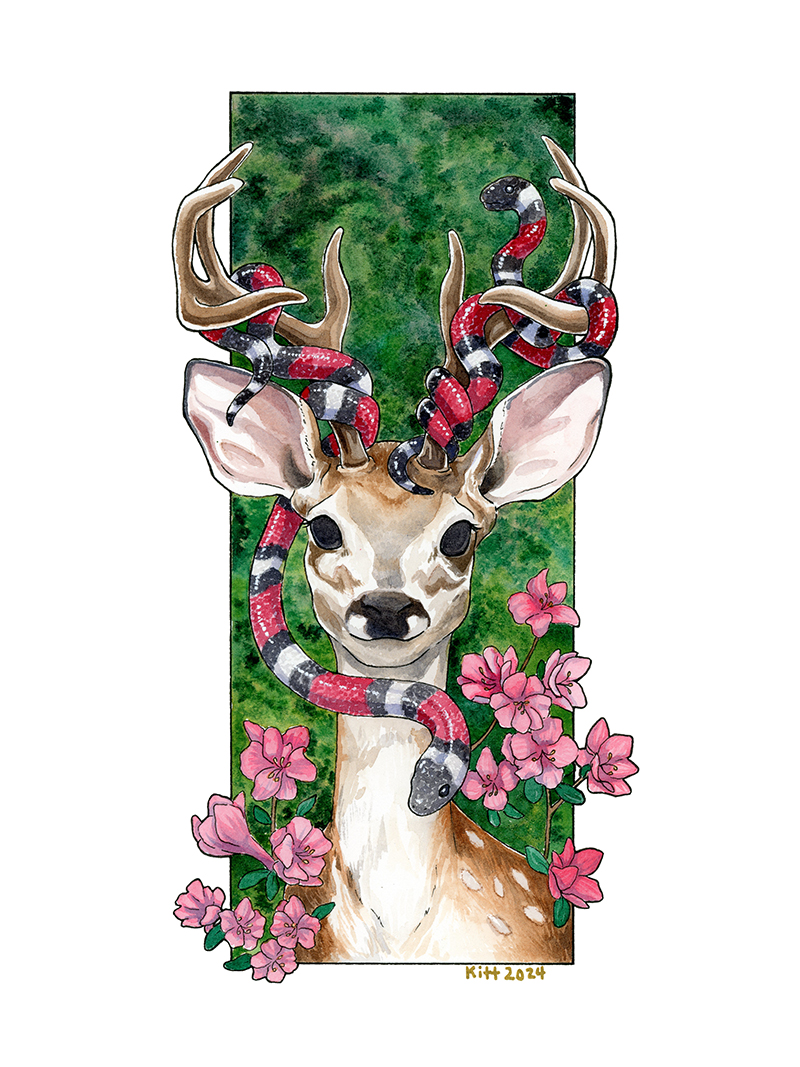
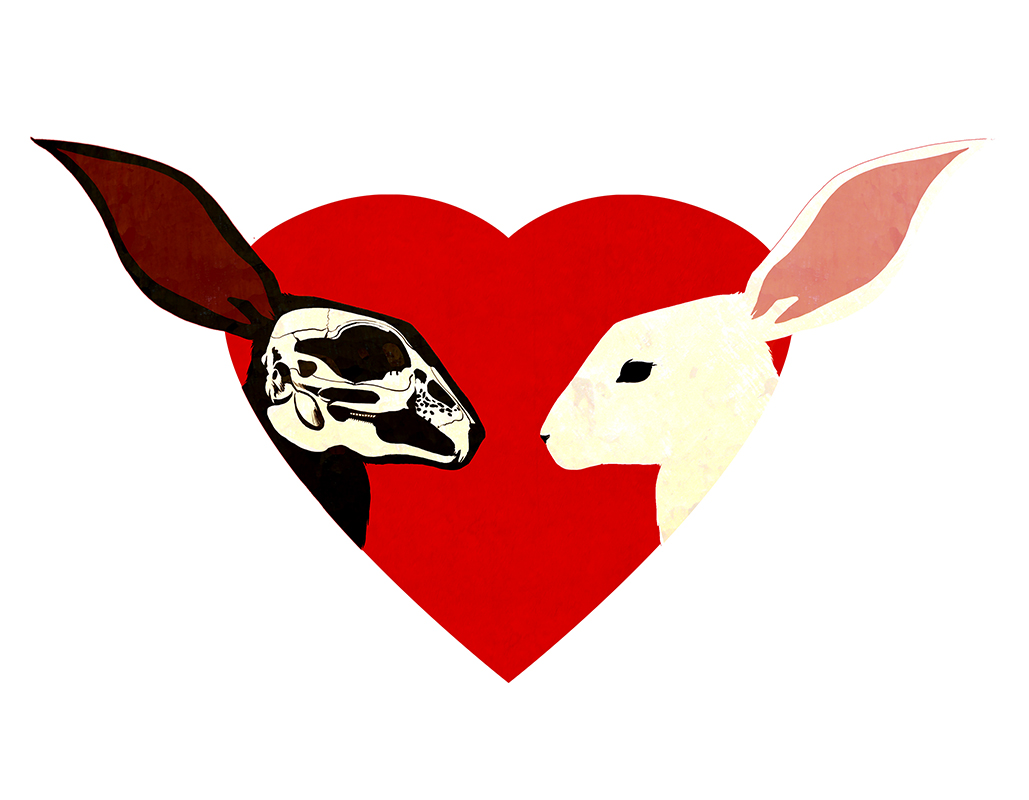
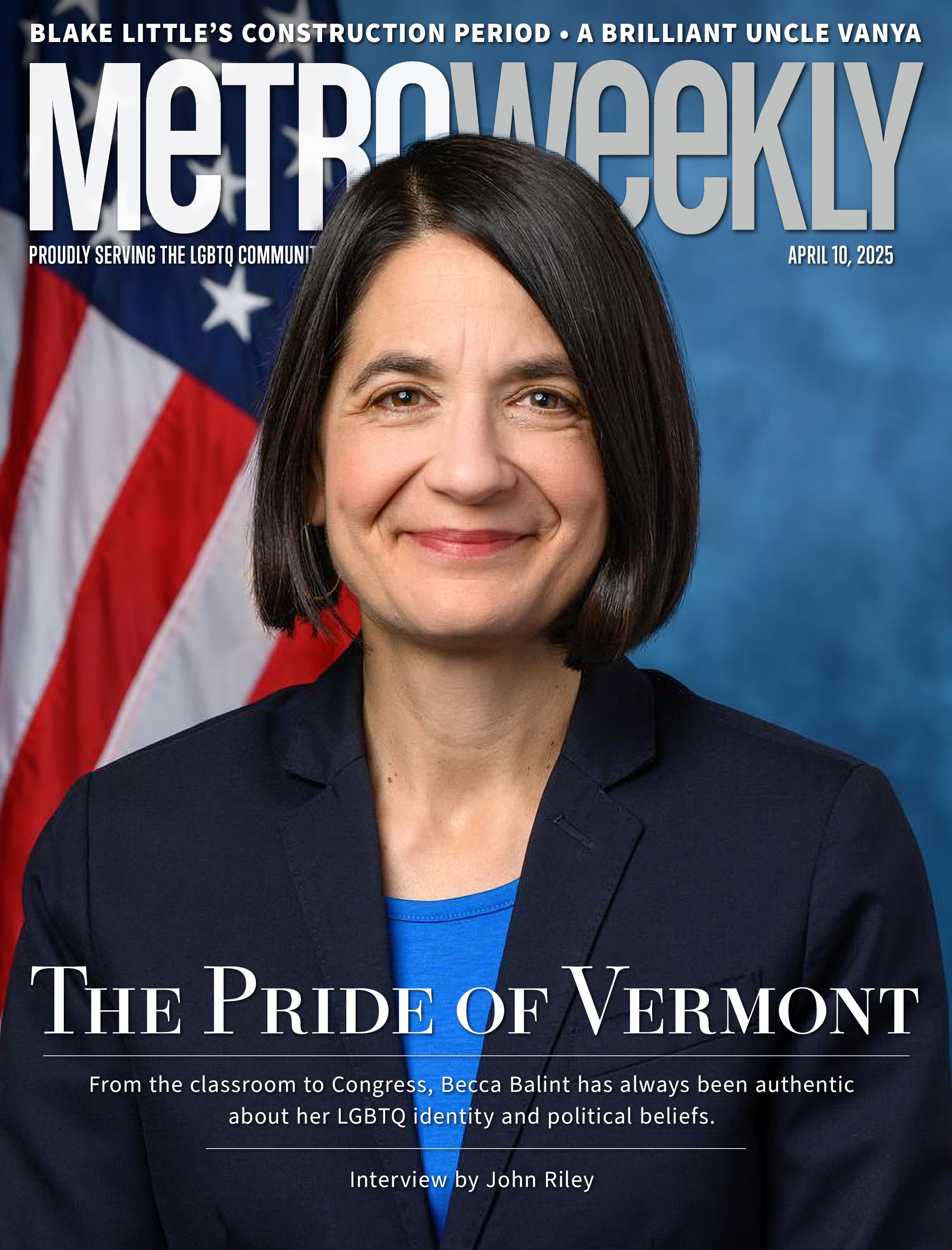















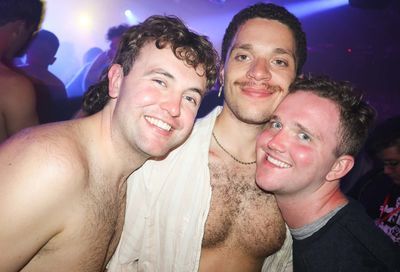
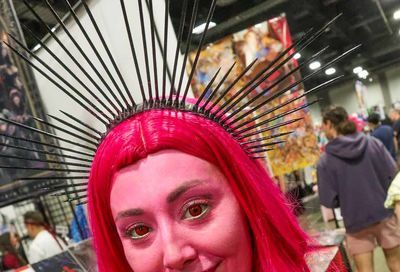
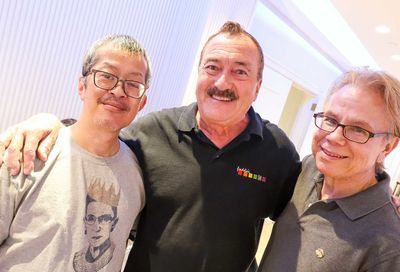
You must be logged in to post a comment.